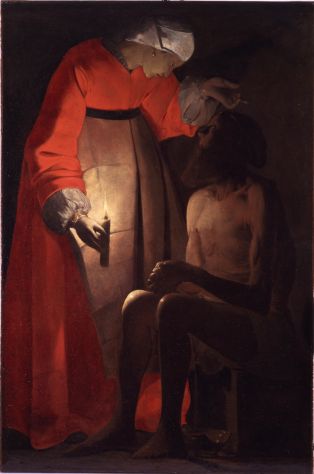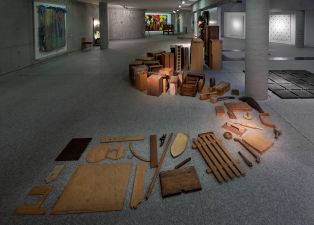- Découvrez les collections
- Notice d'oeuvre



Milan, 1925 ; Turin, 2003
1967 entre ; 1969 et
H. 158 cm ; l. 100 cm ; P. 75 cm ; Vol. 1,185
M0536_84.18.1
Mario Merz est un des principaux fondateurs du mouvement artistique Arte povera, né en Italie à la fin des années 1960. En rupture avec le Pop Art, lié à la société de consommation, et avec l’Art minimal et sa complexité, l’Arte povera met l’accent sur le processus de création, plutôt que sur l’objet fini. Le caractère éphémère et le contact direct avec des matériaux dit pauvres, comme le sable, la terre, le charbon, le bois ou le verre, transformés au minimum, livrent des créations dépouillées, sans aucune volonté esthétisante. L’adjectif « pauvre » ne porte pas de jugement sur les qualités intrinsèques des matériaux ou de l’œuvre créée mais interroge sur le détachement de toute forme de référence culturelle. Ainsi Trucioli (copeaux) allie de la paille, assemblée en botte, dans laquelle est planté un néon diffusant de la lumière bleue. Cet agencement matérialise la tension et l’équilibre fragile entre le naturel et l’artificiel. L’association de matériaux naturels et / ou insignifiants et d’objets issus d’une technologie comme l’électricité provoque la rencontre entre des éléments sans rapport ou quelquefois contradictoires.
Mario Merz is one of the main founders of Arte Povera, which originated in Italy in the late 1960s. Arte Povera represents a break from Pop Art and its ties to consumption, as well as from the complexity of Minimal Art. It emphasises the creation process rather than the finished object. The ephemeral character and the direct contact with “poor” materials like sand, earth, coal, wood, and glass, which undergo minimal transformation, result in pared-down creations that refuse aestheticism. The adjective “poor” is not a judgment of the intrinsic quality of the materials, nor of the work created. Rather, it is an attempt at detachment from all forms of cultural reference. Thus, Trucioli (shavings) presents a blue neon light planted into a sheaf of hay. The combination demonstrates the tension and fragile equilibrium between the natural and the artificial. The combination of natural materials and/or insignificant materials and objects from a technology like electricity is an encounter between elements that are unrelated or even contradictory.



 Copyright© WebMuseo 2017 - 2024
Copyright© WebMuseo 2017 - 2024